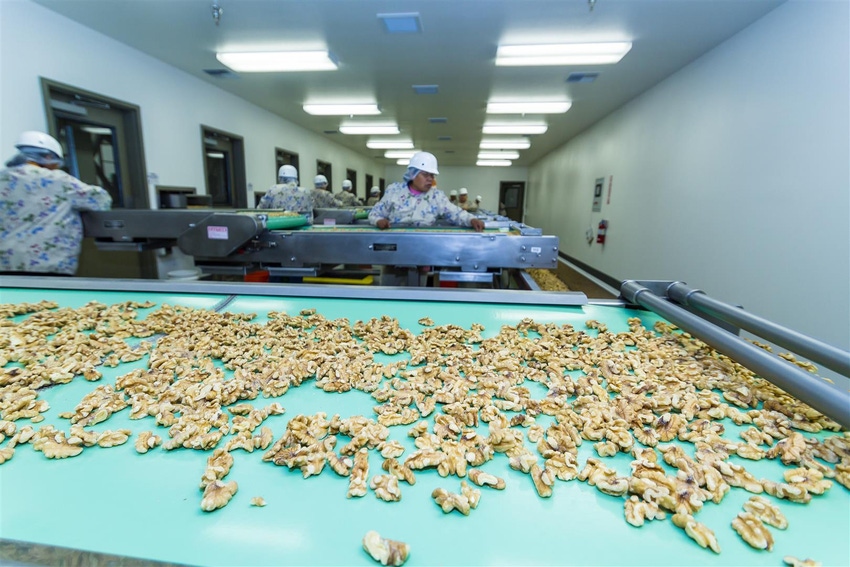
Walnuts, like the other major tree nuts in California, are in the midst of their own growing pains as the industry expects the 2015 crop to tally a record-high 602,000 short tons when the accounting is done later this summer.
The record crops come from increased plantings. The increased growth recently led the California Walnut Board to boost its annual advertising budget from $2 million to $15 million.
Dennis Balint, executive director of the California Walnut Board (CWB) and chief executive officer of the California Walnut Commission (CWC), said the funding boost comes at a time when walnut yields continue to set records.
“$15 million sounds like a lot for advertising, but it’s not,” said Balint. “It’s certainly a big step in the right direction.”
Coupled with the budget increase for advertising, Balint says the CWB is rebranding itself to convince consumers to add more walnuts in their diets, and for those who don’t consume walnuts to add them.
This will be necessary as the most recent 602,000-ton figure could be eclipsed with the current crop, barring unforeseen circumstances.
Yields for the crop currently hanging from trees in California will be better known later this summer as the official 2016 crop estimate is released in early September. Still, Balint says the industry could produce 625,000 tons this year which would be another record.
There’s a catch to estimating the walnut crop after June 1, Balint says. Nut drop brought on by disease or other issues can reduce early-season estimates. Prior to June 1, nut sets on the trees looked heavy with three to four nuts per cluster.
The Chandler variety continues as the most popular variety grown in California. More than 104,000 acres of Chandlers are planted statewide.
Though walnut plantings are spread throughout the Sacramento and San Joaquin Valleys, 14 percent of the state’s crop is grown in San Joaquin County with another 12 percent planted in Butte County.
According to the U.S. Department of Agriculture, California now has about 365,000 acres of walnuts planted across the state. Bearing acreage climbed 10,000 from the previous year to 300,000, as non-bearing acres since 2013 increased 20,000 to 65,000 acres.
Walnuts generally take four years from planting to commercially bear fruit.
Nursery surveys suggest about 17,000 acres of walnuts are planted each year, according to Balint, Not all of those new plantings are new orchards, he said. Some are replacements for trees already in the ground.
Marketing is a cornerstone
Balint oversees the CWB and its sister organization the CWC at its headquarters in Folsom, Calif. The CWB is a federal marketing order established in 1948 and works to promote walnut use in the United States through publicity and educational programs. It is funded by a mandatory assessment of walnut handlers.
The California Walnut Commission (CWC) is a state order established in 1987 and works in concurrence with the California Department of Food and Agriculture. It is mainly involved in health research and export market development activities. The CWC is funded by a mandatory assessment of growers.
Adding to the marketing challenges of nuts remaining to be sold is the 75,000 ton carry-in weighing on the market, according to Tim Merrill, marketing and sales manager with Omega Walnuts in Orland, Calif.
Merrill says the strong U.S. dollar relative to other world currencies and changing buyer habits could continue to pressure sellers to keep prices down, though there may be other more complicated reasons for the weaker grower prices, Merrill admits.
Amy Hochderffer, sales representative with Meridian Growers in Clovis, Calif., says some pricing help was provided earlier this year when USDA purchased “a substantial amount of product” for the school lunch program, thereby taking some nuts off the world market.
According to Balint, Turkey is currently the single-largest buyer of in-shell walnuts. According to the May walnut shipment report, Turkey purchased over 86 million pounds of in-shells during the 2015/2016 marketing year for an increase of over 62 percent from the previous marketing year.
Turkey also purchased 2.1 million pounds of shelled walnuts for an increase of nearly 600 percent from the previous marketing year.
The U.S. is the single-largest user of shelled walnuts. In the 2015-2016 marketing year, U.S. walnut consumption totaled over 133 million pounds, nearly 10 percent more than the previous year. In-shell U.S. consumption rose by less than 1 percent in the same period to just over 15.3 million pounds.
About the Author(s)
You May Also Like






